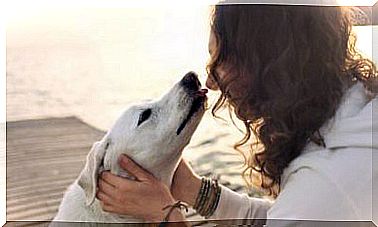There Are No Toxic People, There Are Toxic Behaviors

The idea that there are “toxic people” has spread. In fact, the adjective “toxic” is now very easily applied to anyone with relationship difficulties. In one way or another it has served to exacerbate intolerance. Therefore, it is time to clarify that in reality there are no toxic people , but toxic behaviors.
No human being is reduced to such a general classification as “good” or “bad.” Nor, of course, to such a negative qualifier as “toxic.” People, like life, are changeable. There are times when wrong or destructive behaviors are allowed to surface. You can even stay in them for a long time. However, this does not mean that they are toxic in themselves. Nobody is, and you can’t use that word to qualify anyone’s essence.
Anyone can carry out toxic behavior, but this does not imply that they will manifest it throughout their life. Behavior can be reoriented and become constructive. In any case, it is not “a plague” to get away from, but rather an indication that the person is in trouble and, therefore, is not aware of the damage that is being done and being done.
What are toxic behaviors like?
Toxic behaviors mask insecurity and low self-esteem. At the same time, they present narcissistic characteristics that compensate for the lack of self-esteem. In addition, they are often accompanied by erroneous beliefs, which give false support to that way of acting.

Thus, the main characteristics of toxic behaviors are :
- They manifest a desire for control. There is a strong need to control the people you love. Know all about them. Where are they, with whom, what are they doing. It also manifests itself as a permanent interest in meddling or influencing their way of being and acting.
- They use emotional manipulation. Often in toxic behaviors blackmail is used as a means to get the other to do what that person wants.
- They try to despise and blame. Toxic verbal behaviors emphasize the mistakes and gaps of others. Furthermore, they seek to avoid individual responsibility and blame others.
- They mask envy and jealousy. Toxic behaviors prevent the other’s triumphs from being celebrated. The independence and achievements of others are seen as a threat.
What to do in the face of toxic behaviors?
Toxic behaviors cannot be taken as something general, applicable to anyone who presents one or more of the indicated characteristics. There are always grades, levels, and contexts. It is true that in some cases, toxic behaviors are too ingrained. In these conditions, there is no alternative but to distance yourself. But this does not mean that the other should be segregated. It is important to make him see that the cause of the distancing is his destructive behavior.
We are permanently exposed to contradictions in the relationships we have with others. It is true that a balance can be reached, but this hardly occurs naturally. It is usually only achieved after a good number of ups and downs. Each one leads to their empty relationships, fractures and inconsistencies. It is not reasonable to avoid all this, but to manage and balance it.

Dialogue will always be the privileged way to build meeting points. When a person does not have toxic behaviors, they have the ability to help those who do see them. It also manages to limit attempts at control and invasive behaviors. If you allow them, if you promote, tolerate or silence them, it means that you are also within the same logic. That is, within a destructive logic.
The best way to help someone who engages in toxic behaviors is by not allowing them. Every link has rules of the game, partly explicit and partly implicit. Neither should be allowed to tolerate manipulation, contempt, and any other conduct that degrades or exploits the other. What we must eradicate are the toxic behaviors, not the people who manifest them.









